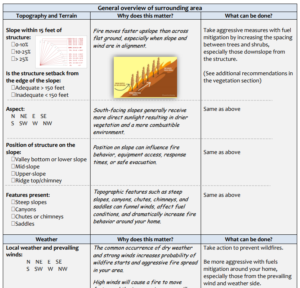Home Risk Assessment
 During a Home Risk Assessment your evaluator will spend time evaluating your property and home utilizing the DNRC Home Risk Assessment form. The evaluator will discuss the evaluation components and how they could be mitigated. They will also be able to provide information on potential wildfire mitigation cost share programs in Gallatin County.
During a Home Risk Assessment your evaluator will spend time evaluating your property and home utilizing the DNRC Home Risk Assessment form. The evaluator will discuss the evaluation components and how they could be mitigated. They will also be able to provide information on potential wildfire mitigation cost share programs in Gallatin County.
How Does an Assessment Work?
- You request a home risk assessment using the form below.
- Gallatin County Emergency Management will coordinate getting it scheduled with you. Depending on the time of year, the lead time will vary.
- The evaluator will meet you at the scheduled time. Expect to spend about an hour with the evaluator.
- The evaluator will want to see your self assessment and know about any specific questions or concerns.
- The evaluator will walk around your property with you and discuss the evaluation and what they are seeing.
- The evaluator will provide you with some initial feedback. Larger and more complex parcels may require some follow up and more detailed evaluation (such as with a forester).
- Following the in person visit, the evaluator will email you a copy of the assessment along with a wildfire risk rating generated using the State of Montana’s scoring algorithm.
- If you expressed interest in wildfire mitigation cost share funding, that will also be provided to you following your Home Risk Assessment.
Requesting Assessment
Complete this Home Risk Assessment Request Form to request a visit.
Mitigation Work
After completing a Home Risk Assessment, you may be eligle to work with Gallatin County Emergency Management on wildfire mitigation cost share funding (based on available funding programs).
Wildfire risk reduction actions are intended to reduce risk, not eliminate the risk of wildfire. It is important to note that wildfire is a natural and inevitable phenomenon in Montana. It is a dynamic event influenced by several factors including weather (winds, temperature, relative humidity), topography (steepness of a slope, the direction that slope faces, and terrain features such as canyons and saddles), and vegetation, also known as fuels (light or heavy loading, height, continuity, and volatility). Human activity, response times, and seasonal trends also play a role. There will always be some risk of wildfire regardless of actions taken and structural characteristics.
Home Risk Assessments are advisory only and do not guarantee that the recommended actions will prevent a wildfire, stop a spreading wildfire, or protect a building from a wildfire.
